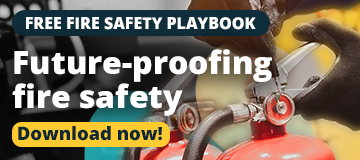
3 habits to improve how your team works on site
Authored by: Paul Webb, Head of Customer Insight & Education
Over the years, I’ve seen mobile apps go from being a “nice to have” to an essential part of getting the job done. But let’s be honest, just having an app doesn’t mean people use it well, or that it actually helps.
The truth is, when you get the basics right, the mobile app becomes less about ticking boxes and more about doing the job properly. It supports your engineers without getting in the way and gives the back office what it needs without endless chasing.
Here are three simple habits that, once built into your team’s routine, will make a noticeable difference to how your business runs.
1. Treat asset history like a living record
When an engineer logs a boiler, a pump, or a radiators detail properly, with a photo of it in place, with make, model, data plate and its condition, that job becomes more than just a callout. It becomes part of a bigger picture for you & your customer. The engineers are literally helping you build a live asset registry.
Asset records aren’t just for compliance or service contracts, well, they are a part of it, but they are much more than that! They’re there to make decisions easier, reduce repeat visits, identify parts easier and give both your team and your customers confidence and information around that asset's lifecycle.
The next time someone’s on a customer's site, they should be able to see what was done the last time, what issues were flagged, and whether anything’s been missed. They should also be able to see that they are in front of the right asset! (Trust me that happens more than you think).
Quick tip: Build a habit of logging assets clearly, on each site visit, even if the job is a quick fix. That one extra minute saves time, questions and risk later on.
2. Make compliance a normal part of finishing the job
Let’s be honest, no one gets into this trade excited about filling out certificates. But they’re a vital part of the work, and when done properly, they’re one of the best tools for protecting your business, your engineers and your reputation.
Electronic certificates take the stress out of it all. No more misplaced paperwork or forgotten signoffs. They can be completed on-site, signed, and sent before the engineer even pulls away. That means fewer chases from the office, no last-minute scrambles, and a clear audit trail ready whenever you need it.
The key here is consistency. Your engineers should know exactly which certificate is needed for which job type and completing it should feel like a natural part of finishing up not some extra admin tacked on at the end.
It’s not just about ticking a compliance box either. A well-completed cert shows your customer that the work was done to the right standard, and that nothing has been missed or rushed. That builds trust, and it sets you apart.
Quick tip: Align your certificate types to the job types you do most often. Build them into your process so it becomes habit, job done, cert issued, customer reassured.
3. Use photos to show the full story of the job
A good photo can stop a problem becoming a dispute. It can also save your team from repeat visits, answer customer questions before they’re asked, and give your back office a much clearer picture of what’s happening on-site.
Before and after shots, images of faulty parts, tight access points, non-compliant installs these things don’t just protect you, they paint a clear picture of the work being done and why. And when they’re clearly labelled in the job notes, they become part of your service record.
This isn’t about taking loads of photos for the sake of it. It’s about capturing the right ones, at the right time, to support the job and keep everyone in the loop whether that’s your customer, your office team, or the next engineer who’s picking it up.
It also shows pride in the work. A neat install photo or a tidy repair speaks volumes about your team and your standards.
Quick tip: Encourage your engineers to take clear, well-lit photos and label them with a short note. Before and after shots have become the norm now and give you and the customers clarity and protection.
Final word from me
This isn’t about trying to change everything overnight, it never is. It’s about building small habits into the way your team already works, habits that make jobs smoother, protect your business, and give your customers a better experience.
If your engineers are logging assets properly, issuing certs reliably, and snapping a few well-timed photos, you’ll see the difference. Not just in compliance or paperwork, but in how the whole job flows from the callout to the customer’s inbox.
These little things, done well and done consistently, are what separate a good job from a great one. And over time, they add up to better service, better efficiency, and better growth.


.png)